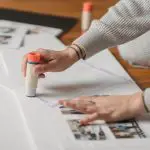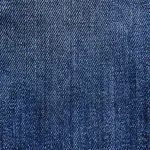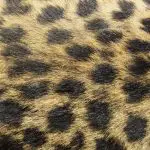Do you ever wonder how certain fabrics are able to hold their shape and structure without falling apart at the seams? The answer lies in bonding fabric.
Bonding fabric is a method of fusing two or more layers of material together with the use of heat, pressure, or adhesive. This process creates a strong and durable bond that can withstand wear and tear, making it a popular choice in various industries such as fashion, automotive, and medical.
Bonding fabric is not only practical, but it also offers designers and manufacturers the ability to create unique and innovative garments and products. With the ability to bond different materials together, the possibilities are endless.
From combining leather and neoprene for a high-end jacket to bonding foam and fabric for a cushioned car seat, bonding fabric allows for versatility in design and functionality. Understanding the different types of bonding techniques, applications, and factors to consider when choosing bonding fabric can help you make informed decisions and achieve the desired outcome for your project.
Table of Contents
Definition of Bonding Fabric
You may not realize it, but bonding fabric is the secret ingredient that makes your favorite clothing items feel so comfortable and lightweight. This type of fabric is made by bonding two layers of fabric together using an adhesive material. The result is a single layer of fabric that is thicker and more durable than either of the individual layers on their own.
Bonding fabric is commonly used in the fashion industry to create a variety of clothing items, such as jackets, pants, and skirts. The material is particularly popular for activewear and outdoor clothing, as it provides an extra layer of protection against the elements. Bonding fabric is also great for creating structured garments, as it helps to maintain the shape and silhouette of the clothing item.
One of the biggest benefits of bonding fabric is its versatility. The adhesive material used to bond the two layers of fabric together can vary, which means that designers can create a range of different textures and finishes. For example, some bonding fabrics have a matte finish, while others have a glossy sheen.
This makes bonding fabric a great choice for designers who want to create unique and interesting clothing items that stand out from the crowd.
Types of Bonding Techniques
So, you wanna know about the different types of bonding techniques used in the garment industry? Well, there are three main types: heat bonding, chemical bonding, and pressure bonding.
Heat bonding involves using heat to melt and fuse two fabrics together.
Chemical bonding uses adhesives to create a bond between the fabrics.
Pressure bonding uses pressure and heat to bond the fabrics together.
Let’s take a closer look at each of these techniques.
Heat Bonding
By using heat bonding, fabrics can be permanently fused together, creating a strong and durable bond that will withstand wear and tear. This technique involves using heat and pressure to melt a thermoplastic adhesive film, which is applied between two layers of fabric. Once the adhesive film has melted and cooled, the two layers of fabric are bonded together. Heat bonding is a popular technique for bonding fabrics that are difficult to sew, such as synthetic materials or those with a high pile.
The following table shows some advantages and disadvantages of using heat bonding as a bonding technique for fabric:
| Advantages | Disadvantages |
|---|---|
| Fast process | Limited to certain types of fabrics |
| Strong bond | May not be as flexible as other bonding techniques |
| Can bond multiple layers | Requires specialized equipment |
| Minimal material waste | Can be difficult to control temperature and pressure |
Overall, heat bonding is a useful technique for bonding fabrics that require a strong and durable bond without the need for sewing. While it may have some limitations, it is a fast and efficient way to bond certain types of fabrics together.
Chemical Bonding
Chemical bonding involves the use of chemicals to create a permanent bond between materials. Unlike heat bonding, which relies on heat to activate adhesive materials, chemical bonding uses chemical reactions to create a strong bond between two fabrics. This type of bonding is often used in industries that require a high level of durability and strength, such as automotive, aerospace, and military.
One common example of chemical bonding is the use of adhesives. Adhesives are chemicals that are applied to one fabric surface and then activated through contact with another surface. Once the adhesive has bonded to both surfaces, it creates a permanent bond that is difficult to break.
Other types of chemical bonding include coatings, laminates, and treatments that are applied to fabric surfaces to enhance their properties, such as water resistance or flame retardancy.
Overall, chemical bonding is a versatile and effective method for creating strong, long-lasting bonds between fabrics.
Pressure Bonding
Using pressure to bond materials together creates a quick and efficient process for industrial applications. Pressure bonding involves pressing two materials together with high heat and pressure, causing them to fuse together.
This process is often used in the production of laminates, which are two or more layers of material bonded together. One example of pressure bonding is the production of plywood. Thin layers of wood are glued together and then pressed with heat and pressure to create a strong and durable material.
This process can also be used to bond fabrics together, creating a stronger and more durable material for use in clothing and other textile products. Pressure bonding is a versatile method that can be used with a variety of materials to create a wide range of products.
Applications of Bonding Fabric
If you’re curious about how bonding fabric is used in various industries, you’ve come to the right place.
The fashion industry has embraced bonding techniques for creating seamless and lightweight garments with clean lines.
Sports and outdoor gear also benefit from this technology, as it allows for durable and weather-resistant apparel.
Additionally, bonding fabric is used in medical and industrial applications for its ability to create strong and hygienic bonds between fabric and other materials.
Fashion Industry
The fashion industry has embraced bonding fabric to create sleek and modern designs that are sure to turn heads. Bonding fabric, also known as fused fabric, allows designers to create unique and structured garments that would be difficult to achieve with traditional sewing techniques. This fabric is created by bonding two or more layers of fabric together using heat, pressure, and adhesive. The result is a fabric that is strong, durable, and often water-resistant.
Bonding fabric has become increasingly popular in the fashion industry due to its versatility. It can be used to create everything from jackets and coats to dresses and skirts. It also allows designers to create unique textures and patterns by bonding different materials together. The following table showcases some of the common materials that are used in bonding fabric and their properties.
| Material | Properties |
|---|---|
| Polyester | Durable, wrinkle-resistant, quick-drying |
| Nylon | Strong, lightweight, water-resistant |
| Spandex | Stretchy, form-fitting |
| Cotton | Soft, breathable, absorbent |
Overall, bonding fabric has revolutionized the fashion industry by allowing designers to create garments that are both functional and fashionable. Its unique properties have made it a popular choice for designers who want to create cutting-edge designs that stand out from the crowd.
Sports and Outdoor Gear
Sports and outdoor gear has seen an increase in the use of performance-enhancing materials that provide durability and comfort for athletes. One of these materials is bonding fabric, which is becoming more popular due to its unique properties.
Here are some reasons why bonding fabric is a great choice for sports and outdoor gear:
- Bonding fabric is lightweight, making it ideal for athletic wear that needs to be breathable and easy to move in.
- It’s also water-resistant, so athletes can wear it in rainy or wet conditions without feeling weighed down or uncomfortable.
- Bonding fabric is incredibly durable, which means it can withstand the wear and tear of intense activities like hiking, rock climbing, and mountain biking.
- It’s also easy to clean and maintain, which is important for athletes who need to keep their gear in top condition.
- Finally, bonding fabric is comfortable to wear, thanks to its soft, flexible texture that moves with the body and doesn’t chafe or irritate the skin.
All in all, bonding fabric is a smart choice for anyone who needs high-quality, long-lasting sports and outdoor gear. Whether you’re a professional athlete or just someone who loves to stay active, this innovative material can help you perform at your best while staying comfortable and protected in any conditions.
Medical and Industrial Applications
When it comes to medical and industrial applications, professionals are always looking for materials that can provide durability and comfort in high-stress environments. This is where bonding fabric comes in.
Bonding fabric is a type of material that combines two or more layers of fabric together, resulting in a single, strong and high-performing fabric. This process is achieved by using different bonding techniques such as heat, pressure, and adhesives.
Bonding fabric is widely used in the medical industry, particularly in the production of medical gowns, masks, and other protective clothing. The fabric’s ability to resist liquids and bacteria makes it an ideal material for medical applications.
Bonding fabric is also used in the industrial sector, where it is used to create safety clothing, workwear, and protective gear. The fabric’s high durability and resistance to wear and tear make it a suitable choice for environments that involve heavy machinery, chemicals, and other hazardous materials.
Factors to Consider When Choosing Bonding Fabric
You’ll want to consider several factors when choosing bonding fabric. Here are three important things to keep in mind:
-
Material compatibility: The first thing you need to consider is the compatibility of the bonding fabric with the materials you’ll be bonding. Different bonding fabrics work better with certain materials, so it’s important to choose one that’s designed for the specific materials you’re using. For example, if you’re bonding two different types of plastic, you’ll need a bonding fabric that’s compatible with both of them.
-
Strength requirements: The strength of the bond is another important factor to consider. If you’re bonding materials that will be subjected to heavy loads or stresses, you’ll need a bonding fabric that can provide the required strength. Look for a bonding fabric that’s designed to withstand the specific stresses your bonded materials will be exposed to.
-
Application method: Finally, you’ll need to consider the application method when choosing bonding fabric. Some bonding fabrics require heat to activate the adhesive, while others can be applied using pressure alone. Make sure you choose a bonding fabric that’s compatible with your application method and that you have the necessary equipment to apply it properly.
Care and Maintenance of Bonding Fabric
When it comes to caring for your bonding fabric, there are a few key things to keep in mind. First and foremost, make sure to follow the washing and drying instructions provided by the manufacturer.
If your fabric becomes damaged, don’t panic – you may be able to repair it with a few simple steps.
Finally, proper storage is essential to keeping your bonding fabric in good condition for as long as possible.
Washing and Drying
After washing and drying your bonded fabric, it’ll come out looking fresh and new. However, it’s important to follow proper care instructions to ensure that the bonding material remains intact and the fabric retains its original quality.
Here are some tips to keep in mind when washing and drying your bonded fabric:
-
Use mild detergent: Harsh chemicals in strong detergents can damage the bonding material and weaken the fabric. Use a mild detergent specifically designed for delicate fabrics.
-
Wash in cold water: Hot water can cause the bonding material to melt and separate from the fabric. Always wash your bonded fabric in cold water to prevent any damage.
-
Air dry or tumble dry on low heat: Avoid using high heat when drying your bonded fabric as it can damage the bonding material. Air drying is the safest option, but if you prefer to use a dryer, choose the lowest heat setting possible.
By following these simple tips, you can ensure that your bonded fabric stays in top condition and lasts for a long time. Always refer to the care instructions provided by the manufacturer to ensure that you’re taking the best care of your bonded fabric.
Repairing Damaged Fabric
If your favorite clothing item has suffered damage, don’t worry – there are simple ways to repair it and keep it looking great. Bonding fabric is a great solution to fix small holes or tears. It’s an adhesive that can be ironed onto the damaged area to create a bond and prevent further fraying.
To use bonding fabric, first clean the area around the damage with a damp cloth. Cut a piece of bonding fabric slightly larger than the tear and place it behind the damaged area. Then, use a hot iron on a low setting to press the bonding fabric onto the tear for 5-10 seconds. Allow it to cool before wearing or washing the item. The table below provides a quick guide to repairing damaged fabric with bonding fabric.
| Step | Description |
|---|---|
| 1 | Clean the area around the damage with a damp cloth. |
| 2 | Cut a piece of bonding fabric slightly larger than the tear. |
| 3 | Place the bonding fabric behind the damaged area. |
| 4 | Use a hot iron on a low setting to press the bonding fabric onto the tear for 5-10 seconds. |
| 5 | Allow it to cool before wearing or washing the item. |
With this easy solution, you can repair your favorite clothing items and save money on replacements. Bonding fabric is a simple and effective way to keep your wardrobe looking great.
Proper Storage
Proper storage of your clothing items can greatly extend their lifespan and keep them in good condition for longer periods of time. Bonded fabric requires special attention when it comes to storage. This type of fabric is made by bonding two layers of fabric together with adhesives, making it more prone to damage if not stored properly.
To ensure the longevity of your bonded fabric clothing items, it’s important to store them in a cool and dry place. Avoid storing them in areas with high humidity, as this can cause the adhesive to weaken and eventually fail. Additionally, it’s best to store bonded fabric items flat or hanging, rather than folded, to prevent any creases or wrinkles from forming.
By taking these simple steps, you can protect your bonded fabric clothing items and keep them looking great for years to come.
Challenges in Working with Bonding Fabric
Working with bonding fabric can be a challenge for you, as it requires careful handling and attention to detail to ensure a successful bond between the fabrics. Here are some of the challenges you may encounter:
-
Temperature control: Bonding fabric involves the use of heat, which means you need to maintain a specific temperature to achieve a strong bond. However, if the temperature is too high, you risk damaging the fabric. On the other hand, if the temperature is too low, the bond may not be strong enough. It takes practice to get the temperature just right and avoid any mishaps.
-
Pressure: Bonding fabric also requires pressure to create a bond. Too much pressure can cause the fabric to wrinkle or distort, while too little pressure may result in a weak bond. You need to find a balance between the two to ensure a smooth and strong bond. It’s important to use a pressing tool that distributes pressure evenly and to apply the right amount of pressure for the fabrics you are bonding.
-
Fabric compatibility: Not all fabrics are suitable for bonding, and some may require special treatment before they can be bonded. For example, silk or delicate fabrics may require a lower temperature and less pressure to avoid damage. It’s essential to check the fabric’s care label and perform a test bond before starting the actual project. This will help you avoid any unwanted surprises and ensure a successful outcome.
Working with bonding fabric can be a rewarding experience, but it also requires patience and attention to detail. By mastering the challenges, you can create beautiful and functional projects that will last for years.
Future of Bonding Fabric
Looking ahead, you’ll be interested to know that bonding fabric technology is constantly evolving. Innovations are being made to improve the bonding process, making it more efficient and cost-effective.
Sustainability and environmental impact are also important considerations, and new bonding methods are being developed with this in mind.
Additionally, there’s potential for bonding fabric to be used in new and exciting applications, such as in the medical and aerospace industries.
Innovations in Bonding Technology
With the latest advancements in bonding technology, designers can now create sleek and seamless garments that are both functional and fashionable.
One of the most exciting innovations in bonding technology is the use of laser cutting. This technique allows for precise cuts in the fabric, creating clean edges and reducing the need for additional stitching. Laser cutting also allows for intricate designs and patterns to be cut into the fabric, adding a unique touch to the garment.
Another innovation in bonding technology is the use of ultrasonic bonding. This technique uses high-frequency vibrations to bond two layers of fabric together without the need for adhesives or stitching. Ultrasonic bonding creates a strong and durable bond that is also flexible, making it ideal for sportswear and other active wear.
With these new bonding technologies, the possibilities for creating innovative and functional garments are endless.
Sustainability and Environmental Impact
As consumers become more environmentally conscious, it’s crucial for fashion brands to prioritize sustainability in their production processes. Bonding technology can contribute to a more sustainable fashion industry, but it’s important to consider its environmental impact.
Here are three ways in which bonding fabric can be environmentally sustainable:
-
Using water-based adhesives: Traditional solvent-based adhesives can release harmful chemicals into the air and waterways. Water-based adhesives are a more environmentally friendly alternative, as they don’t contain volatile organic compounds (VOCs) and have a lower impact on the environment.
-
Recycling and repurposing: Bonding technology can help extend the life of garments by bonding different materials together. When a garment is no longer wearable, these bonded materials can be separated and recycled or repurposed into new products, reducing waste and the need for new resources.
-
Choosing sustainable materials: When bonding fabrics, it’s important to consider the environmental impact of the materials being used. Sustainable materials such as organic cotton, recycled polyester, and plant-based fabrics like Tencel can be bonded together to create eco-friendly garments. By choosing sustainable materials, fashion brands can reduce their carbon footprint and contribute to a more sustainable future.
Potential for New Applications
The future of fashion just got even more exciting with the endless possibilities that come with using bonding technology for new applications. Bonding fabric can be used to create new textures and patterns on garments, offering designers the opportunity to experiment with new designs and create unique pieces that have never been seen before.
Instead of relying on traditional sewing methods, bonding fabric allows for the creation of seamless designs, which not only look sleek and modern but also reduce waste by eliminating the need for excess fabric.
The potential for bonding fabric goes beyond just fashion. It can also be used in the automotive and aerospace industries to create lightweight and durable materials that can withstand harsh conditions. The medical industry can also benefit from bonding technology as it can be used to create sterile and waterproof materials for medical equipment and clothing.
With so many possibilities, bonding fabric is a game-changer that can revolutionize the way we create and design products in a variety of industries.
- Tetron Fabric for Marine Applications: Durability and Use Cases - June 18, 2025
- Tetron Fabric for Outdoor Furniture: Weather Resistance and Care - June 18, 2025
- Tetron Fabric for Wall Coverings: Style and Application Tips - June 18, 2025






